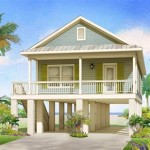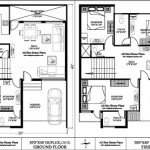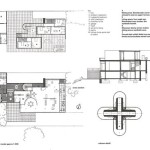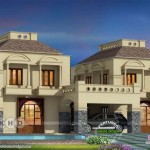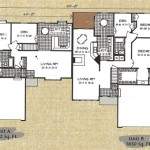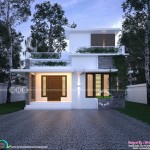Tiny House Floor Plans and Costs
Tiny houses offer a unique blend of affordability, sustainability, and minimalist living. Understanding the various floor plans and associated costs is crucial for anyone considering this lifestyle. This article explores several popular tiny house floor plans and provides a general overview of the costs involved in building or buying one.
Popular Tiny House Floor Plans: Several floor plan styles cater to different needs and preferences. The most common designs include:
Tumbleweed: Inspired by the prairie schooner wagons, these designs often feature rounded roofs and a compact layout. They typically prioritize sleeping and living areas, with smaller kitchens and bathrooms. Tumbleweed designs generally range between 100 and 200 square feet.
Gooseneck: Recognizable by the extended overhang over the hitch, gooseneck trailers offer more square footage than traditional rectangular trailers. This overhang is often utilized for sleeping lofts, maximizing living space below. Gooseneck tiny houses typically range from 250 to 400 square feet.
Loft Style: This popular design maximizes vertical space by utilizing lofts for sleeping or storage. A ladder or stairs provides access to the loft, while the main floor accommodates the living area, kitchen, and bathroom. Loft-style tiny houses offer efficient use of limited space and can vary greatly in size.
Cabin Style: Inspired by traditional cabins, these designs often feature a pitched roof and a more rustic aesthetic. They prioritize a cozy and inviting atmosphere, often incorporating natural materials like wood. Cabin-style tiny houses can range from compact designs under 200 square feet to larger models exceeding 400 square feet.
Single Level: For those seeking accessibility and ease of movement, single-level floor plans offer a practical solution. They eliminate the need for stairs or ladders, making them suitable for individuals with mobility challenges. Single-level tiny houses generally range from 200 to 300 square feet.
Factors Affecting Tiny House Costs: The cost of a tiny house varies significantly depending on several factors:
DIY vs. Professional Build: Building a tiny house oneself can significantly reduce costs, but requires considerable time, skill, and effort. Hiring a professional builder offers convenience and expertise but increases the overall cost.
Materials: The choice of materials significantly impacts the final price. Standard building materials are generally less expensive than high-end or custom options. Reclaimed materials offer a sustainable and often cost-effective alternative.
Appliances and Fixtures: The cost of appliances and fixtures can vary greatly. Opting for smaller, energy-efficient models can help minimize expenses. Choosing basic fixtures over luxury options can also contribute to cost savings.
Size and Complexity: Larger, more complex designs with intricate features will generally cost more than smaller, simpler models. The number of lofts, bathrooms, and built-in features will influence the final price.
Location: Building codes and regulations vary by location, which can influence the permitting and inspection costs. Labor costs also tend to differ regionally, impacting the overall cost of professional builds.
Estimated Cost Ranges: Providing precise cost estimates is challenging due to the numerous variable factors. However, the following ranges offer a general idea:
DIY Shell: A basic DIY shell, without interior finishing or appliances, can range from $10,000 to $20,000.
Finished DIY Build: A completed DIY tiny house, including interior finishes and appliances, can range from $20,000 to $40,000.
Professionally Built Shell: A professionally built shell can range from $25,000 to $50,000.
Turnkey Tiny House: A fully finished, move-in ready tiny house built by a professional can range from $40,000 to $100,000 or more, depending on the size, features, and materials used.
Additional Costs: It's essential to consider additional costs beyond the construction or purchase price:
Land: Owning land adds a significant expense. Renting land or joining a tiny house community offers alternative options.
Transportation: Moving a tiny house requires specialized transport, which can incur costs depending on the distance.
Utilities: Connecting to utilities or setting up off-grid systems involves expenses.
Insurance: Insuring a tiny house requires specialized policies and varies depending on location and coverage.
Careful planning and research are essential for anyone considering a tiny house. Understanding the various floor plans and associated costs allows individuals to make informed decisions aligned with their budget and lifestyle goals.

16 Cutest Tiny Home Plans With Cost To Build Craft Mart

16 Cutest Tiny Home Plans With Cost To Build Craft Mart

Floor Plans For Tiny Houses Besting A Frames Cabins Sheds Unique Small House Build Your Own

12 X 20 Tiny Home Designs Floorplans Costs And More The Life

15 Budget Friendly Tiny House Plans For Maximum Space And Comfort

16 Cutest Tiny Home Plans With Cost To Build Craft Mart

17 Do It Yourself Tiny Houses With Free Or Low Cost Plans Planos De Casas Hermosas Diseño Pequeñas Contenedores

10 X 20 Tiny Home Designs Floorplans Costs And Inspiration The Life

Tiny House Plan Examples

Tiny House Plans That Are Big On Style Houseplans Blog Com

